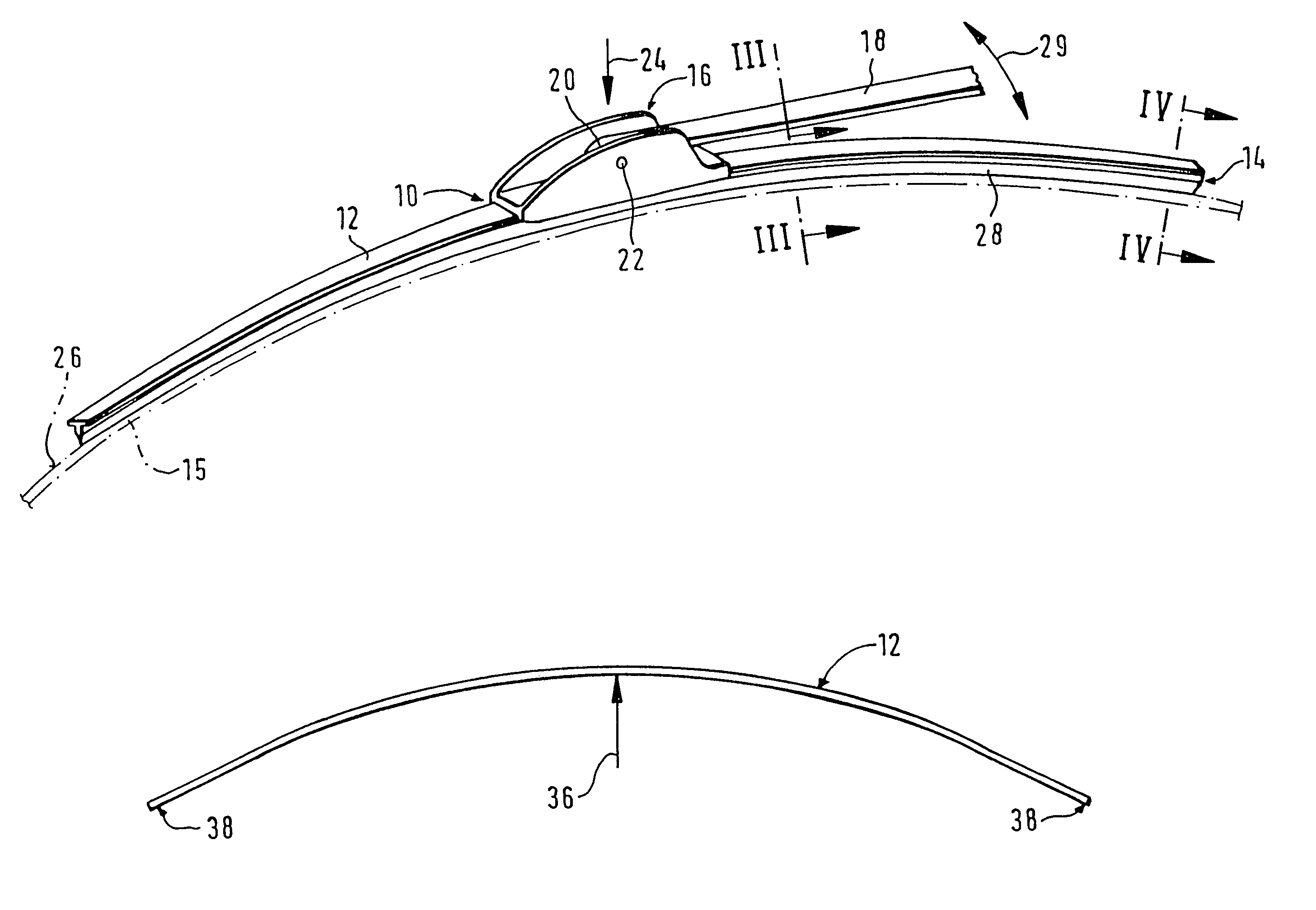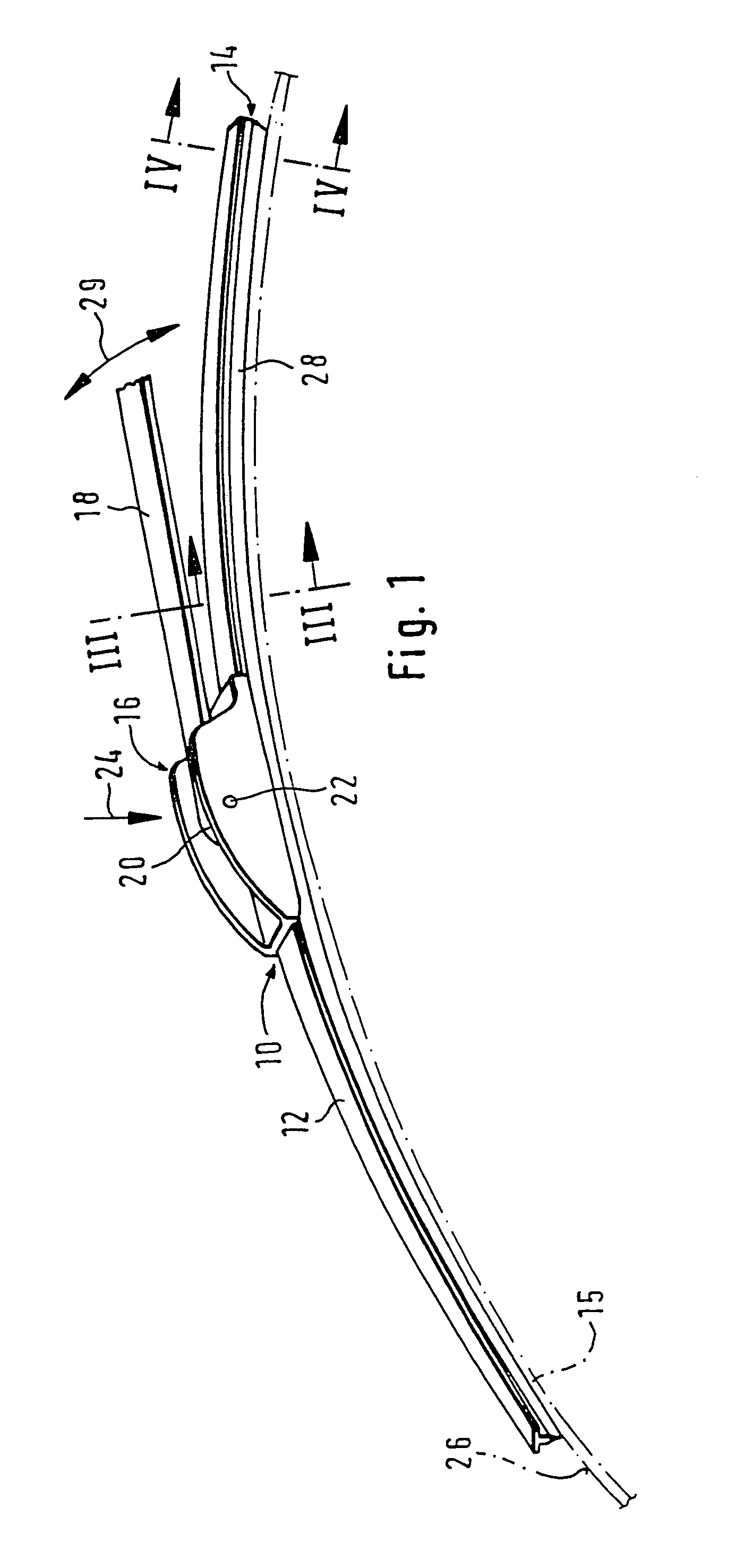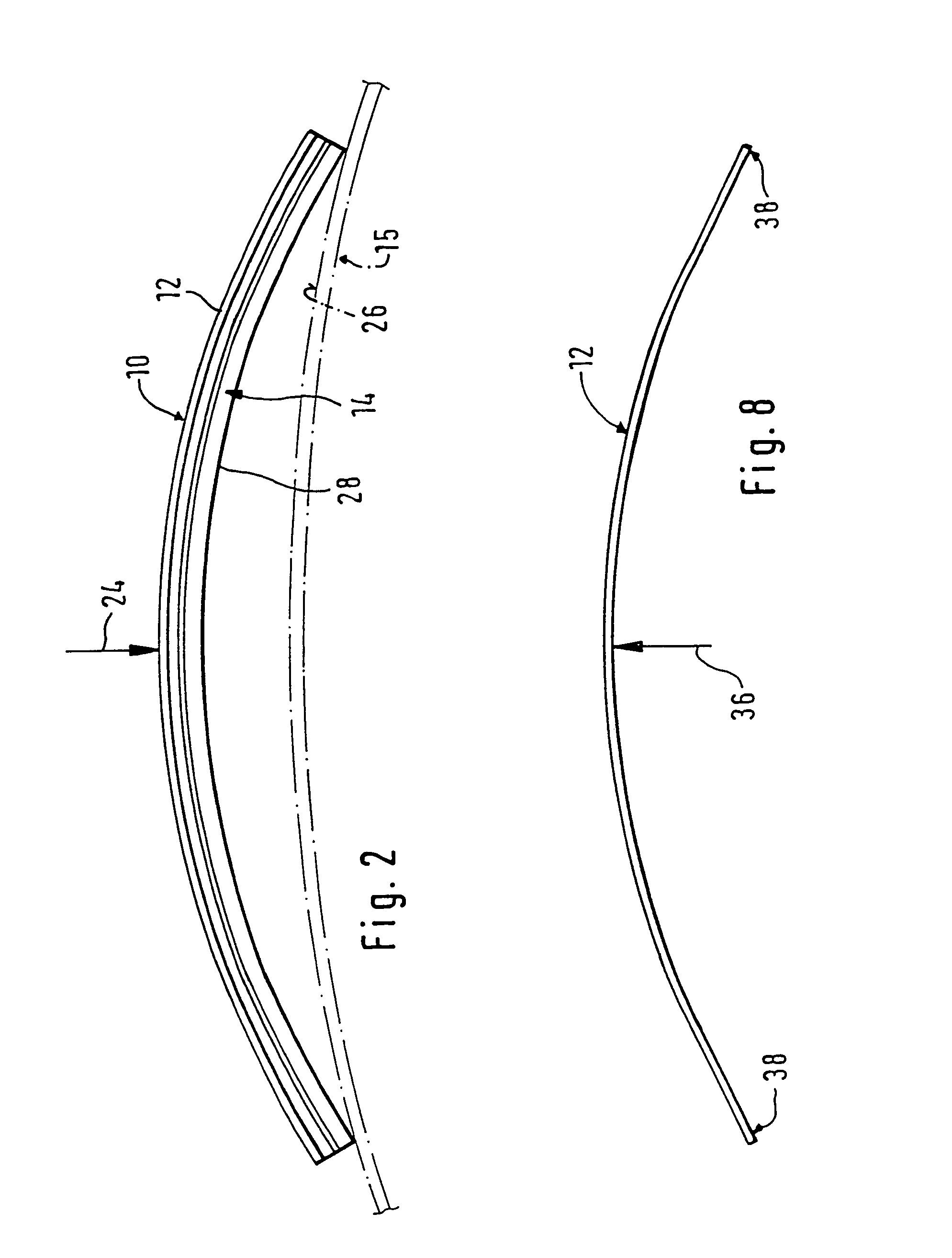Wiper blade for motor vehicle windows
a technology for motor vehicles and windows, applied in the direction of vehicle maintenance, vehicle cleaning, domestic applications, etc., can solve the problems of different pressure distribution, unsatisfactory knocking noise, and matching of the stress of the carrying element to the desired pressure distribution, so as to reduce the contact pressure
- Summary
- Abstract
- Description
- Claims
- Application Information
AI Technical Summary
Benefits of technology
Problems solved by technology
Method used
Image
Examples
Embodiment Construction
[0019]A wiper blade 10 shown in FIG. 1 has an elongated, spring-elastic carrying element 12 for a wiper strip 14, and this carrying element 12 is shown separately in FIG. 8. As can be seen from FIGS. 1, 3, and 4, the carrying element 12 and the wiper strip 14 are connected to each other so that their longitudinal axes are parallel. A connecting device 16 is disposed on the top side of the carrying element 12 remote from the window 15 to be wiped—indicated with dot-and-dash lines in FIG. 1—and with the aid of this connecting device 16, the wiper blade 10 can be detachably connected to a driven wiper arm 18 that is supported on the body of a motor vehicle. The elongated, rubber-elastic wiper strip 14 is disposed on the underside of the carrying element 12 oriented toward the window 15. A hook, which is used as a reciprocal connecting means, is formed onto the free end 20 of the wiper arm 18 and encompasses a pivot bolt 22 belonging to the connecting device 16 of the wiper blade 10. Th...
PUM
 Login to View More
Login to View More Abstract
Description
Claims
Application Information
 Login to View More
Login to View More - R&D
- Intellectual Property
- Life Sciences
- Materials
- Tech Scout
- Unparalleled Data Quality
- Higher Quality Content
- 60% Fewer Hallucinations
Browse by: Latest US Patents, China's latest patents, Technical Efficacy Thesaurus, Application Domain, Technology Topic, Popular Technical Reports.
© 2025 PatSnap. All rights reserved.Legal|Privacy policy|Modern Slavery Act Transparency Statement|Sitemap|About US| Contact US: help@patsnap.com



